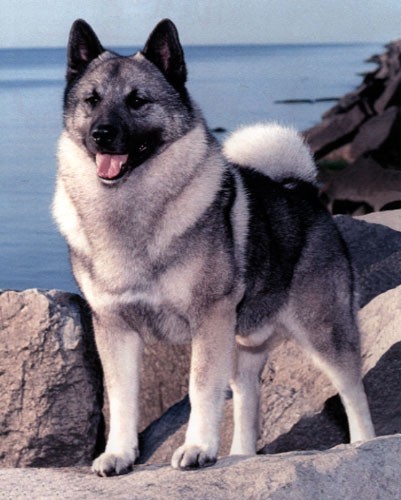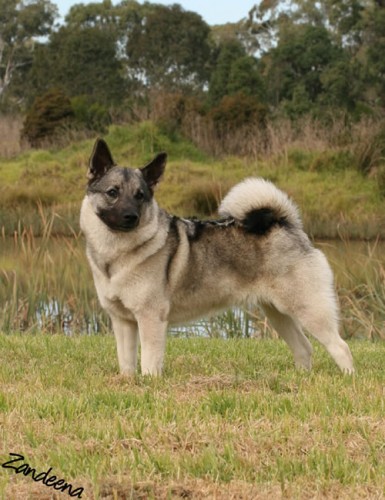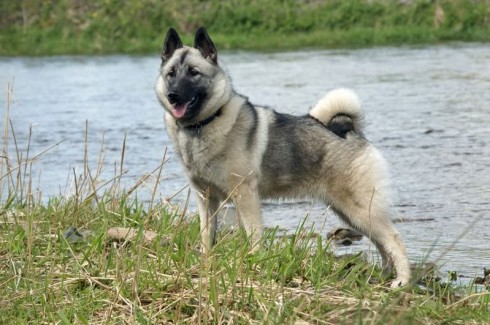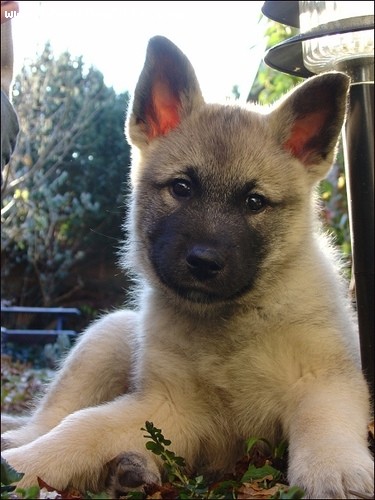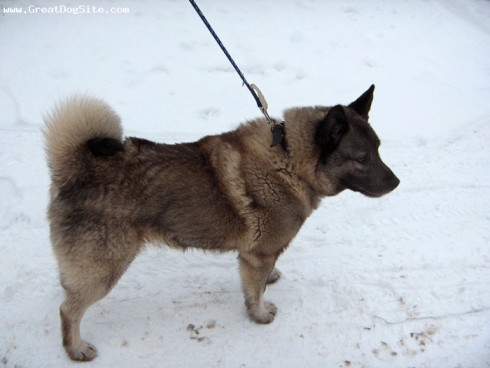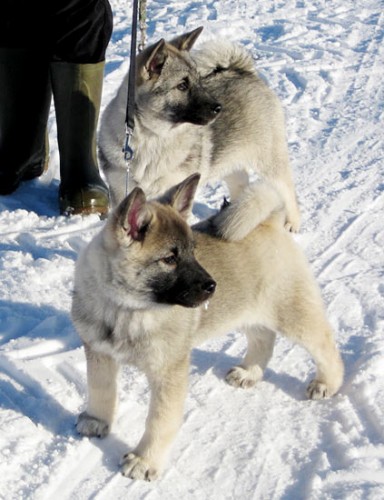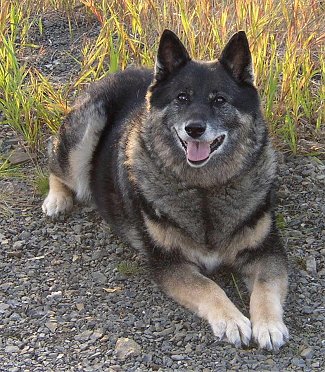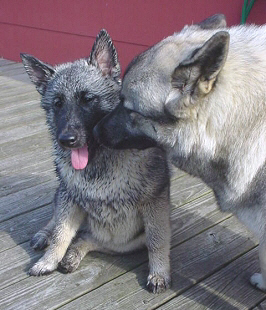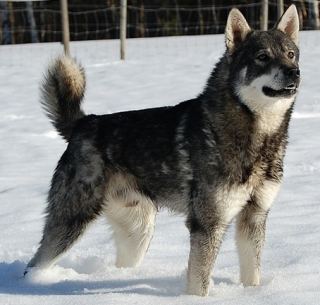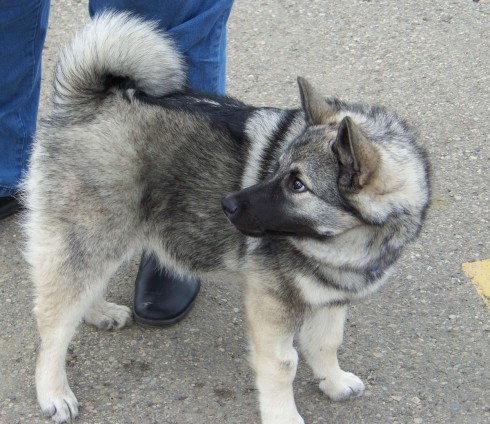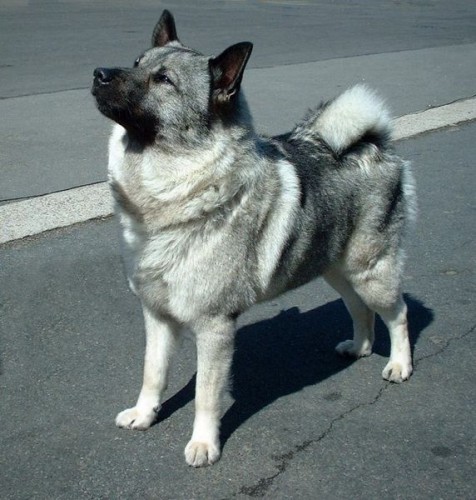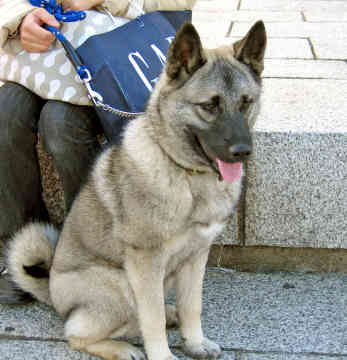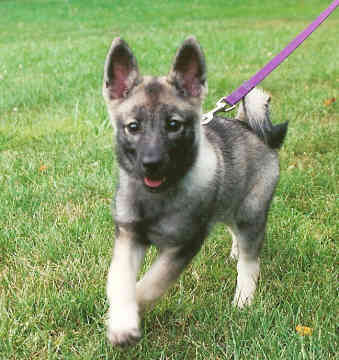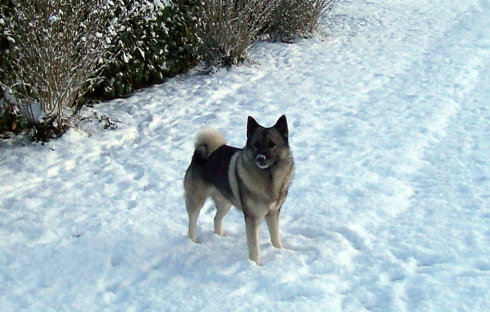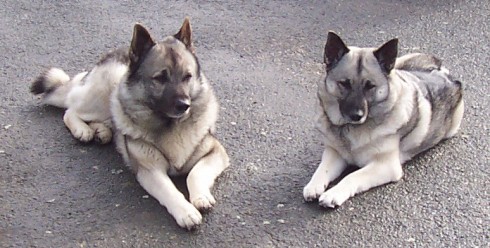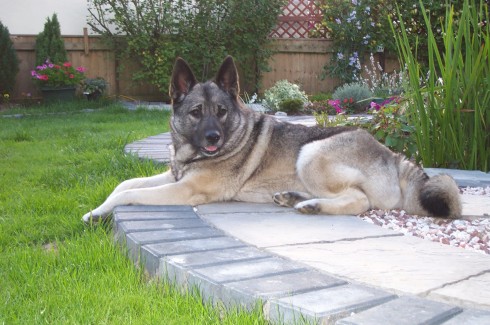Main Index
In Store
Our Web Store
Miniature Schnauzer Picture Gallery
Latest Dog Blogs
- What Are The Basic Commands To Train A Dog?
- PaySafe As The Most Popular Type Of Deposit
- Everything You Need To Know About Pet Sales
- Dogs Contribute To Our Physical And Mental Well Being
- How To Choose Where To Bet On Greyhounds In 2022
- Volunteer With Animals - How To Help Dogs Around The World
- Basic Understanding Of The House Edge
- Why You Should Get A Dog
- Top 20 Popular Dog Names Around The World
- Constipation in Dogs and How to Find Solutions
Norwegian Elkhound
Norwegian Elkhound Picture Gallery
Norwegian Elkhound Clubs/Associations
The Full Norwegian Elkhound Description
It takes a brave dog to track a moose, and that's what Norwegian Elkhounds did for thousands of years. Over the thousands of years it has existed, the Norwegian Elkhound has looked just as it does now. Nature made him strong and clever, so he could be a good hunter. His thick, soft, gray coat can stand the cold and snow of Norway. And his noble, playful ways have made him a beloved friend
Did you know?
The Norwegian Elkhound is a hunting dog that originated in Norway as early as 5000 B.C.
The Norwegian Elkhound is used to hunt elk, bear, and other wild animals.
So you want to own a Norwegian Elkhound?
The Norwegian Elkhound's coat needs a good brushing once a week and a periodic bath.
The Norwegian Elkhound is bold and energetic.
The Norwegian Elkhound thrives on companionship and will prove to be a lifelong loyal friend.
Indicative Breed Standard
General Appearance
Powerful; compact body; square outline and proud carriage; coat close and abundant but not open; upstanding pointed ears; tail tightly curled over back.
Characteristics
A hardy hunting Spitz with a bold energetic disposition.
Temperament
Friendly, intelligent and independent without any sign of nervousness.
Head and Skull
Wedge-shaped, comparatively broad between ears; stop, not large, forehead and back of head slightly arched; foreface broad at root (not pinched in), evenly tapering whether seen from above or side, never pointed; bridge of nose straight and approximately the length of forehead; tight-fitting skin on head, no wrinkle.
Eyes
Not prominent, slightly oval, medium size, dark brown, giving frank, fearless and friendly expression.
Ears
Set high, small, firm and erect, pointed and very mobile; slightly taller than width at base; when alert, outer edge should be vertical.
Mouth
Jaws strong with perfect, regular scissor bite, i.e. upper teeth closely overlapping lower teeth and set square to the jaws.
Neck
Medium length, powerful, carrying the head high; a rich ruff on close- fitting skin but no dewlap.
Forequarters
Legs straight with good, not coarse, bone and strong pasterns; shoulders sloping; elbows closely set in.
Body
Powerful; short, strong back; loin short and wide with very little tuck-up; chest deep and broad; well curved ribs; topline straight and level; distance from brisket to ground not less than half the height at withers.
Hindquarters
Legs firm, strong and powerful; little but definite bend at stifle and hock; straight when viewed from behind.
Feet
Comparatively small, slightly oval; tightly closed, well arched toes with protective hair between thick pads; turning neither in nor out. Nails firm and strong.
Tail
Strong, set on high; thickly coated without plume; tightly curled, preferably over the centre line of back.
Gait/Movement
Demonstrates agility and endurance; stride at the trot even and effortless, back remaining level; as speed of trot increases, front and rear legs converge equally in straight lines towards a centre line beneath body.
Coat
Close, abundant, weather resistant; soft, dense, woolly undercoat and coarse, straight outer coat; short and smooth on head and front of legs, slightly longer on back of front legs, longest on neck, back of thighs and tail; not trimmed.
Colour
Grey of various shades, with black tips to outer coat; lighter on chest, stomach, legs, underside of tail, buttocks and in a harness mark; ears and foreface dark; a dark line from eye to ear desirable; undercoat pure pale grey. Any pronounced variation from the grey colour, sooty colour on lower legs, spectacles or white markings undesirable.
Size
Ideal height at shoulder: dogs: 52 cms (201/2 ins); bitches: 49 cms (191/2 ins). Weight approximately 23 kgs (51 lbs) and 20 kgs (44 lbs) respectively.
About Our Article Directory
- Article
- 27 November 2010
- 2 comments
Canis lupus familiaris
- Breed Article
- 29 May 2010
- No comments
Quick Search
Donate
Latest Dog Pods
- Tips on How to Stop Your Dog from Biting
- Beware - Not All Advertised Dog Rescues Really Are! How Can You Know The Truth?
- Helpful Tips For Dog Obedience Problems
- How to Keep Dogs From Eating Poop
- Dog Grooming Tips - A General Overview of the Very Basics of Dog Grooming
- Recognising Different Types of Dog Obedience Problems
- 5 Important Tips On Feeding A Puppy


